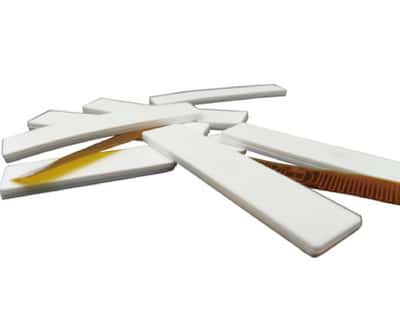Fixed asset tracking is the process of using technologies such as barcode or RFID to track and manage the fixed assets of a business, such as computers, equipment, tools, furniture, etc. Fixed asset tracking is very important for improving the efficiency, saving cost, preventing loss and optimizing decision of a business. However, fixed asset tracking also has some disadvantages that need to be fully considered and evaluated by the business before implementing it. In this article, we will introduce some of the advantages and disadvantages of fixed asset tracking, to help you understand whether this technology is suitable for your business.
Advantages of Fixed Asset Tracking
Improve asset utilization: Fixed asset tracking can let you know the location, status, usage and maintenance records of your assets accurately, thus avoiding duplicate purchases, idle or overuse. This way, you can better allocate and deploy your assets, improve their utilization and lifespan.
Save time and manpower: Fixed asset tracking can let you conduct inventory and audit quickly, reduce human errors and omissions. You don’t need to spend a lot of time and manpower to manually record and check your asset data, but instead you can automatically obtain and update data by scanning or reading tags. This way, you can save time and manpower, improve work efficiency.
Reduce risk and loss: Fixed asset tracking can let you timely discover and deal with the problems of your assets, such as damage, expiration, loss or theft. You can set up alarms or reminders to prevent or reduce these problems. For example, you can set a threshold to monitor the inventory level of your assets, and when it is lower or higher than this threshold, the system will automatically notify you. Or, you can set a geofence to limit the movement range of your assets, and when they exceed this range, the system will automatically alert you. This way, you can reduce risk and loss, protect your asset security.
Optimize decision making and planning: Fixed asset tracking can let you obtain and analyze your asset data, thus optimizing your decision making and planning. You can make reasonable budgets, purchases, maintenance and disposal plans based on your asset data. You can also evaluate your asset performance, benefit and value based on your asset data. This way, you can optimize decision making and planning, improve business competitiveness.
Disadvantages of Fixed Asset Tracking
Require cost investment: Fixed asset tracking requires a certain cost to purchase and install tags, readers, software and other equipment and systems. These costs may decrease with the development of technologies, but still require businesses to conduct cost-benefit analysis to determine whether it is worth investing.
Require training and maintenance: Fixed asset tracking requires training staff on how to use and operate tag
Require training and maintenance: Fixed asset tracking requires training staff on how to use and operate tag, readers, software and other equipment and systems. This may take some time and energy to ensure that staff can use and operate fixed asset tracking technology proficiently and correctly. In addition, fixed asset tracking also requires regular maintenance and updates to ensure the normal operation and security of equipment and systems. This may require additional costs and resources, as well as professional technical support.
May be interfered with or damaged: Fixed asset tracking may be interfered with or damaged by some physical or electronic factors, affecting the accuracy and integrity of data. For example, metals, water, dust and other substances may affect the reading and writing of RFID tags. Or, electromagnetic waves, wireless signals, malicious software and other factors may interfere with or damage the functionality of RFID readers or software. Therefore, fixed asset tracking requires taking some measures to prevent or reduce these interferences or damages, such as choosing the appropriate tag type, location and frequency, and using encryption, firewall and other technologies to protect data security.
Examples of Fixed Asset Tracking
To help you better understand the advantages and disadvantages of fixed asset tracking, we provide you with some practical examples, showing how some businesses use fixed asset tracking technology to improve their business.
Walmart: Walmart is one of the largest retailers in the world, it uses RFID technology to track and manage its millions of products worldwide. Walmart uses RFID tags to record product information, such as name, price, inventory level, sales volume, etc., and uses RFID readers and software to update and analyze these data in real time. This way, Walmart can improve product visibility and traceability, optimize inventory management and supply chain management, improve customer satisfaction and loyalty.
National Aeronautics and Space Administration (NASA): NASA is the US government agency responsible for space exploration and scientific research, it uses RFID technology to track and manage its thousands of assets on Earth and in space. NASA uses RFID tags to record asset information, such as name, number, location, status, history record, etc., and uses RFID readers and software to quickly conduct inventory and audit. This way, NASA can improve asset utilization and security, reduce asset loss or damage, save time and cost.
US Navy Medical Center (NMC): NMC is one of the US Navy’s institutions that provide medical services and education, it uses RFID technology to track and manage its thousands of equipment in the hospital. NMC uses RFID tags to record equipment information, such as name, model, location
location, usage, maintenance record, etc., and uses RFID readers and software to monitor and control these data in real time. This way, NMC can improve equipment availability and efficiency, optimize equipment management and allocation, improve medical quality and safety.
Conclusion
Fixed asset tracking is a method of using technology to track and manage the fixed assets of a business. It has some advantages, such as improving asset utilization, saving time and manpower, reducing risk and loss, optimizing decision making and planning, etc. But it also has some disadvantages, such as requiring cost investment, requiring training and maintenance, may be interfered with or damaged, etc. Therefore, businesses need to conduct a full analysis and evaluation based on their actual situation and needs before implementing fixed asset tracking, to determine whether it is suitable to use this technology. At the same time, businesses also need to choose the appropriate tags, equipment, systems and service providers to ensure the effect and quality of fixed asset tracking.
















